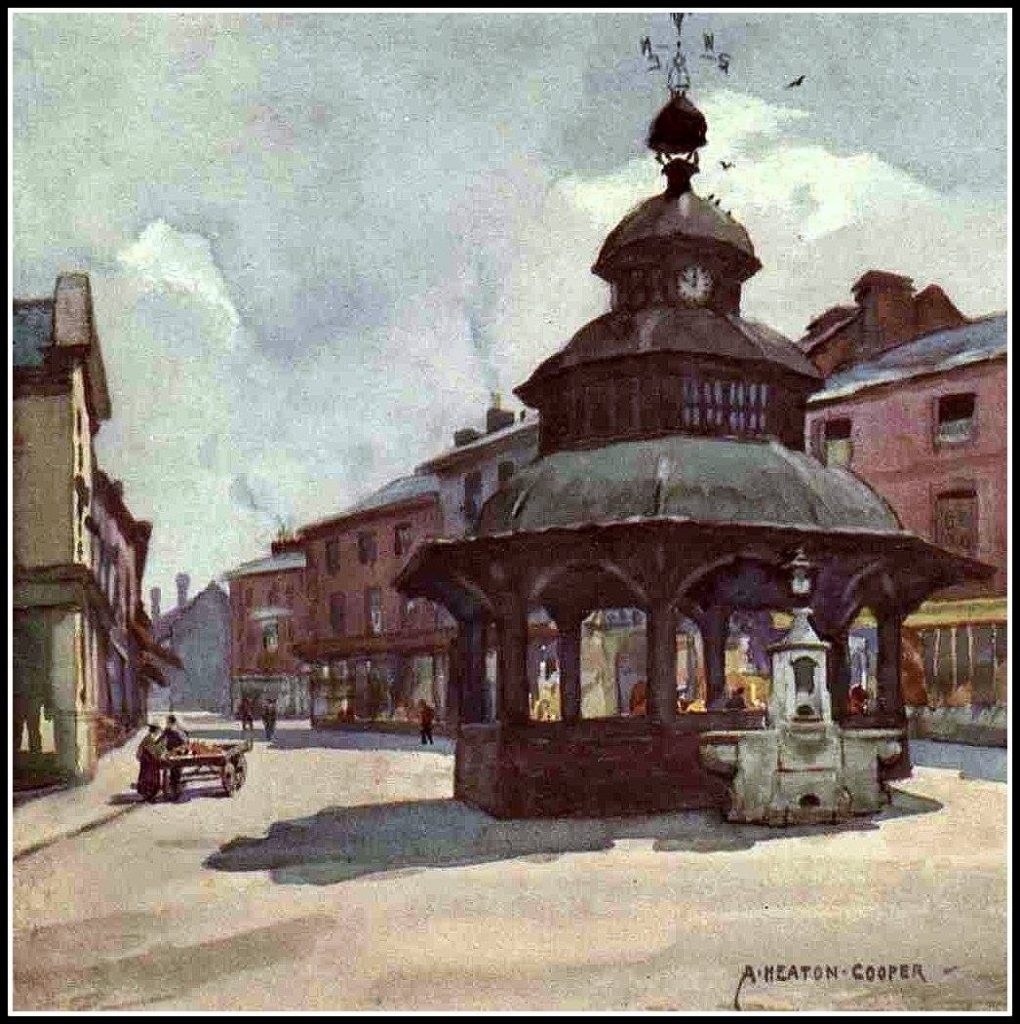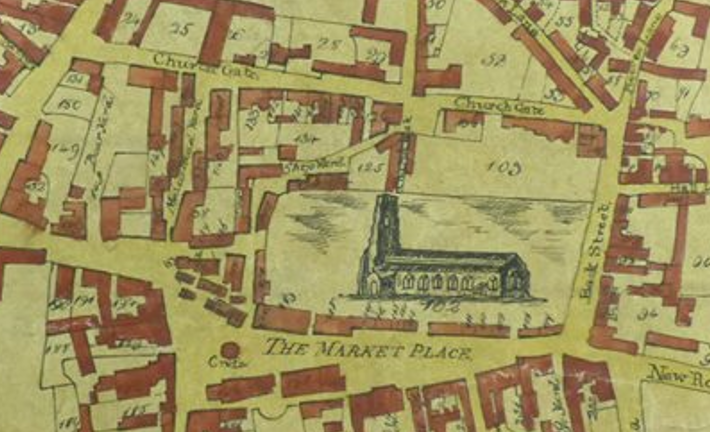The Market Cross
From the earliest days of the town the Market Place provided a place where local farmers and traders could sell their produce, livestock, meats, and of course the wool and the famous ‘Walsham’ cloth. This woollen fabric was lighter than ‘Worstead’ and was an important industry in the town. By 1379 sixty eight families were weavers compared to thirty working in agriculture.
Many of the narrower shops in the Market Place still occupy the original market stall plots, of widths in multiples of seven feet. These are parallel to the church on the north side, with the south side forming a triangular shape, very typical of medieval market places.
The meat market was in an area known as ‘The Shambles’, mostly lost in the great fire but located in the area below the fish and chip shop. Shown here in an 19th century tithe map
In 1275 Walsham was given by Royal Charter of Henry III the right to hold a weekly market. A plot in the market wasn’t free, and the rent was collected in ‘The Old Tollhouse’. The Market Rental Book of 1391 states that the cross fixed the site of the market as being a place where ‘buyers and sellers could lawfully congregate’. This was probably a stone post with the tollhouse located close by. As the market prospered, it was found necessary to provide a larger tollhouse, and a new market ‘cross’ was built.
In 1544 Thomas Andrews gave £2 in his will for the setting up of a market cross, other townspeople also contributed. This cross was started in 1550 during the reign of Edward VI by Bishop Thirlby of Norwich but doesn’t seem to have been completed until 1555.
The Great Fire of 1600 destroyed this building, along with most of the town, but it was rebuilt by Bishop Redman in 1602 to an unusual design. A one handed clock was acquired from Worstead Hall in 1787 and in 1855 its owners, the Ecclesiastical Commissioners, formally presented the Market Cross to the town. A minute hand was added to the clock the following year. In 1899 funds from the North Walsham Steeplechase were used to buy a new chiming clock.

Image courtesy of Heaton Cooper Studio
The Great Fire
In the year 1600, the town suffered a disastrous fire, which began at around six o’clock in the morning on the 27th June, in the house of a “poor and lewd person” by the name of Dowle, who on fleeing was apprehended and imprisoned. One hundred and eighteen houses, seventy shops, and countless other buildings were destroyed.
The Market with its Cross and stalls were destroyed along with their merchandise. Although reportedly fired in five places at once the church escaped much damage, costing £25 to repair. It provided temporary shelter to the townspeople for many months. A plea was made to the Queen for some timber from the royal estates to rebuild the town. The rebuilding of the town was estimated to cost £20,000. Sir William Paston was a generous supporter as was the Bishop of Norwich and churches across the country. In later years St Nicholas’ church repaid this generosity by collecting contributions to assist those in need following town fires elsewhere in East Anglia
Much town layout was altered during rebuilding; the parallel ‘Lokes’ south of the Market Place may be early attempts at town planning. Sir William Paston used the opportunity to buy up several acres of scorched land to build his famous School.
